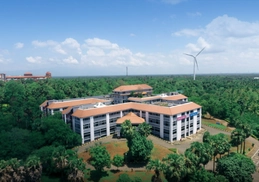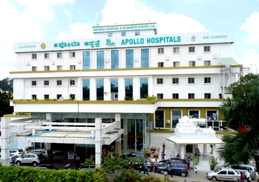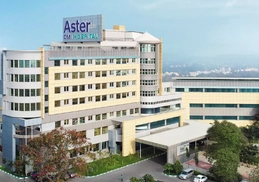
+91 8095511877

+91 8095511877
Glaucomas are a group of eye diseases that damage the optic nerve in the eye. It causes an increase in the pressure inside the eyes leading to optic nerve damage.
After cataracts, glaucomas are the second most common cause of vision loss. It affects people of all age groups, including the newborns and the elderly. Your risk of it will increase with age.
The chamber inside your eyes between the lens and the cornea contains a clear fluid called aqueous humor. Its function is to nourish the various structures inside it and remove any waste products. It drains out of the eyes through an area called the 'angle.' Blocks in the 'angle 'can cause the fluid to build-up in the eyes to increase pressure.
In some, there is no real cause for this to happen. Such glaucomas are primary glaucomas.
Secondary glaucomas occur due to some diseases. You are more likely to have it if you have diabetes, hypertension, etc. Some other conditions or injuries to the eyes can also be a cause.
In most, there will few early signs and symptoms. Pain in the eyes and blurring of vision will happen in some. As it progresses, one will have partial loss of sight. It usually affects peripheral or side vision in the early stages. Gradually, there will be a total loss in vision if not treated early on.
There is no cure to glaucoma, and treatments aim to control it. You will have treatments to reduce the pressure in the eyes. Medicines to decrease the production of fluid can help some. If the condition worsens, one will need surgery to open the 'angle' to allow the liquid to flow out.
Laser surgery is a non-invasive technique to treat glaucoma. Some may need surgery to open the angle. Treating glaucoma in the early stages can help it from causing severe vision problems.
Glaucomas occur when there is an increase in pressure in your eyes. The pressure inside the eyes is called Intra-Ocular Pressure or IOP.
Inside your eyes is a small chamber that lies between the cornea and the eyewall. It contains a fluid called the aqueous humor. It forms in the ciliary body that lies behind the iris. It flows into the chamber through an opening in the middle of the iris.
The main functions of aqueous humor are to
It flows out of the chamber through an area called the drainage angle that is present between the iris and cornea. The angle has a kind of mesh that allows the fluid to flow out. The fluid moves into the sclera or the white of the eye. The blood vessels there then absorb the fluid.
Any block in the drainage of fluid will increase the IOP. It then will put pressure on the optic nerve to damage it and cause glaucoma.In some, glaucoma will occur even if the IOP is normal. The reason could be a very sensitive optic nerve that can not withstand normal pressure.
Your chances of getting glaucoma will be more if you have any risk factors. The common ones are
There are two main types of glaucomas
It accounts for almost 90% of all cases. In this, the angle that drains the fluid is open. But, the amount of fluid that flows out through it is less. It causes the pressure to rise and damage the optic nerve. The first sign is the loss of peripheral or side vision. Slowly the angle of vision gets narrow, and you will only be able to see things that are straight ahead(Tunnel vision). If it progresses, there will be a total loss of sight.
You will not have any signs in the early stages that make it difficult to detect. High blood pressure could be a factor.
It is a type of open-angle glaucoma. In this, the pressure is normal, but one may have an optic nerve that is sensitive to pressure. You are more likely to have it if
It occurs when an edge of the iris blocks the angle through which the fluids drain. It results in a build-up of fluid very fast, raising the pressure in the eyes.
The common symptoms are
You need to treat this very fast, or loss of sight will happen in a few days. Doctors will use lasers to remove the block to allow the fluid to drain out.
These are glaucomas that occur at the time of birth. The common signs are
Treatment in the early stages can cure it and prevent any further problems.
It happens when new blood vessels form in the angle that drains the fluids. These block the fluid from flowing out. You are likely to have this if you have diabetes or hypertension. The common symptoms are
You will need treatments to control the disease that caused it and also to lower the eye pressure.
The iris in your eyes has a lot of pigments that give it color. At times flakes of these can get loose and block the angle. The symptoms are
Young persons are more likely to have this problem. The symptoms usually get worse with exercise. Treatments aim to reduce the pressure in the eyes. But in some, the problem can happen again, and no treatment can prevent this.
You will have this when some proteins in the eyes break off and block the angle. It prevents the fluid from draining out to increase your eye pressure. The common signs are
You are more likely to have this if you are more than fifty and have a family history. You will need laser treatment or surgery to treat this.
Uveitis is a type of inflammation in the uvea, a part of the eyewall. In some, it leads to scars that block the angle to prevent fluid drainage. It increases eye pressure to cause glaucoma.
The common signs are
Your treatment will have two steps. Treating the uveitis and its cause is the first step. The next is to reduce the pressure in the eyes.
Some of the common tests to detect glaucoma are
Some of the more advanced methods include
Your glaucoma treatment will depend on the severity of your symptoms and the level of IOP.
If you have few symptoms, you will have drugs. The medicines help to control the symptoms by
If medicines do not help you, the doctor will suggest surgery to remove the block.
You may any of the following depending on your condition.
The most common laser surgeries for glaucoma are-
You can have Laser surgery as an outpatient procedure. Your recovery will be faster as there are no incisions.


This article has been reviewed for medical correctness and relevance by
Dr Shalini Shetty
Dr Shalini Shetty is the Head of the ophthalmology department at Apollo hospitals, Bangalore. She has over 20 years of experience. She has expertise in all ophthalmic lasers and surgeries. Dr. Shalini has received many awards at both national and international level. She has been the first doctor to give a Braille prescription to visually impaired patients for which she has got appreciation from all over the world. In her career of more than 20 years, she has done tremendous service in this field. Dr. Shalini has experience working both in India and abroad

Ahalia Eye Hospital

Apollo Bangalore

Apollo Health City

Aster CMI

Dr Tony Fernandez Eye Hospital

KIMS Hospital Hyderabad
Frequently Asked Questions
What are the early signs of glaucoma?
Am I at risk of glaucoma?
What are the types of Glaucoma?
What are the treatments for Glaucoma?